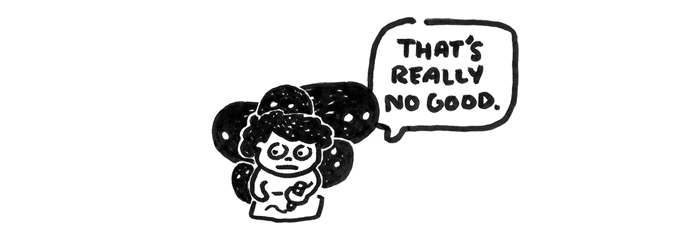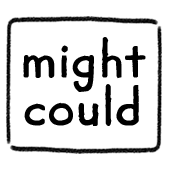
Over years of making art, essays, and classes, I’ve learned that our mindset is the most powerful and influential tool we have as artists. It’s not talent, or expensive pens, or a fancy art school education that makes or breaks our art. It’s our mindset.

But that doesn’t mean that we’re supposed to have a perfectly positive, everything-I-make-is-great attitude. That’s unrealistic, and at times, ignorant. Instead, I think the artist mindset we need is more similar to what psychologists call Emotional Intelligence (EQ).
According to Wikipedia, EQ is:
“the capability of individuals to recognize their own emotions and those of others, discern between different feelings and label them appropriately, use emotional information to guide thinking and behavior, and manage and/or adjust emotions to adapt to environments or achieve one’s goal(s).”
When I started applying this idea to creativity, I started thinking of our mindset as our Artistic Intelligence (AQ?). And I’m defining AQ as the capability for us to recognize how we’re feeling when we’re making art, label those feelings accurately, and use our knowledge and resources to guide our thinking and behavior to manage our feelings in a way that allows us to make the art we want to make.

This idea of Artistic Intelligence is something I’ve been incubating in my head for a while now. We’re not taught as artists how to directly deal with the mental struggles and obstacles that come up when we make art. We’re expected to figure it out on our own, leading many artists to get overcome and quit.
And it’s understandable why people stop drawing. Those difficult feelings that sneak up on us when we sit down to draw—the insecurity, doubt, fear, perfectionism, and expectations—those feelings are hard to deal with.
And on top of that, we’re ashamed that we have these feelings at all, and have the assumption that we should be able to just get over them. This leads us to ignore them, shove them down, and become unaware of the power these feelings have on our minds and art.

The sparse advice that does exist out there on overcoming mental obstacles as an artist is just a pile of unhelpful platitudes and cheers to just “stay positive”, “trust yourself”, and “follow your heart”.
Well, how the heck are we supposed to trust ourself when we’re in the midst of self-doubt and self-criticism? You can’t just wish these thoughts away.
And I think that leads to one of the overarching problem. Many people believe that becoming an artist means getting rid of these feelings. They think: if I were a real artist, I wouldn’t have so much doubt. If I were a real artist, I would just know how to draw in my own style. If I were a real artist, I wouldn’t hate what comes out of my pen onto the page.
But I don’t buy into that. These feelings of discomfort are a part of artmaking, just like they’re a part of life. And building a strong Artistic Intelligence doesn’t mean getting rid of those feelings, it means being able to see them clearly and manage them.
We can’t remove struggle and obstacles from our life. Sometimes making art is just difficult. But we can learn how to deal with uncertainty and strengthen our resiliency.

And then, when those difficult feelings creep in as we work, we’ll have the knowledge and resources to not get sucked in, and instead to see them for what they are—normal, natural feelings that we can manage—so can keep making our art.
What do you struggle with most?
This topic is a big one, and I’m working on more resources on how to built up our AQ. Which mental obstacles do you struggle with the most that you would like help overcoming? Let me know and I’ll be sure to address it in the future!
Join the group discussion in Might Could Studiomates or comment below to share your thoughts with us!

